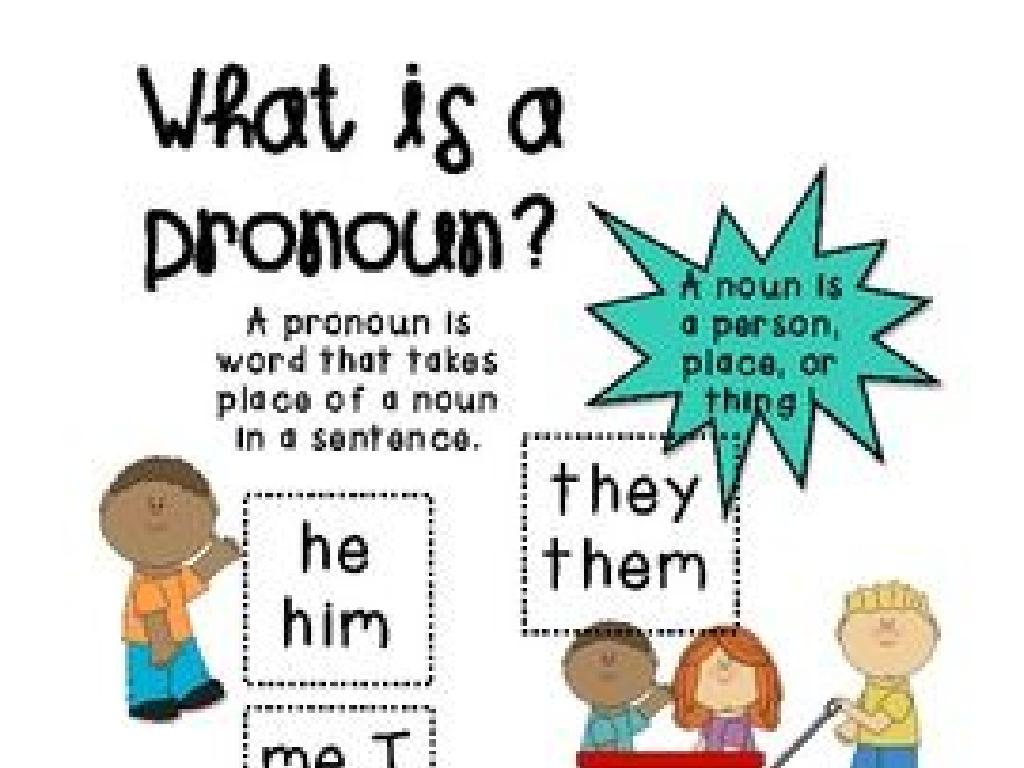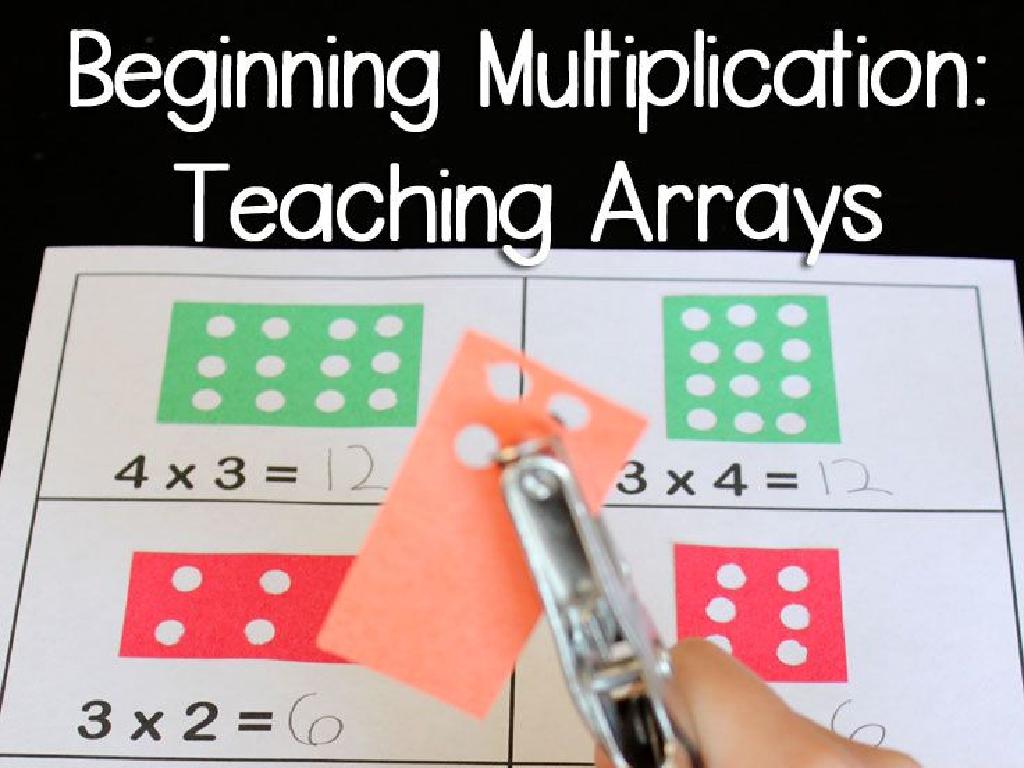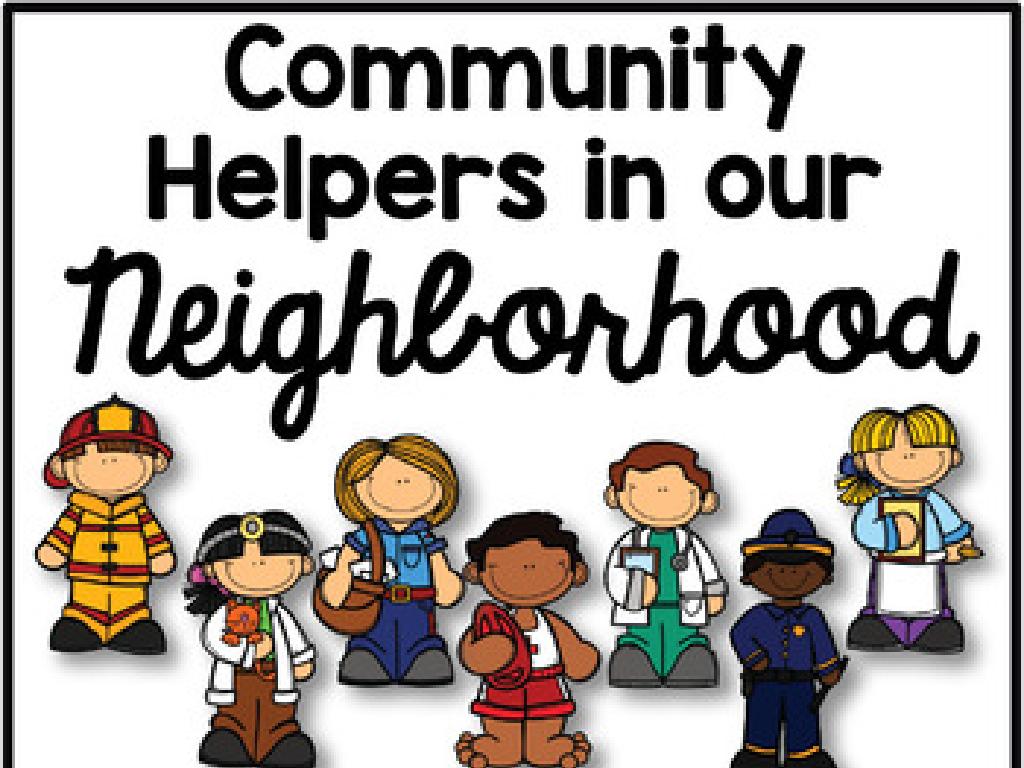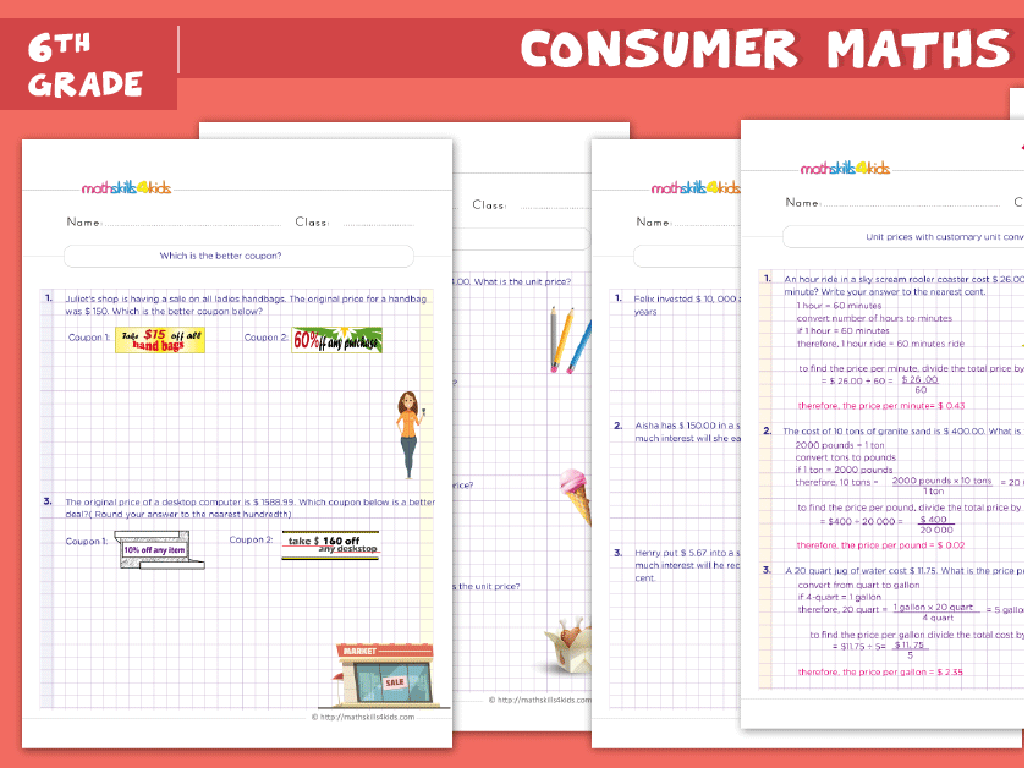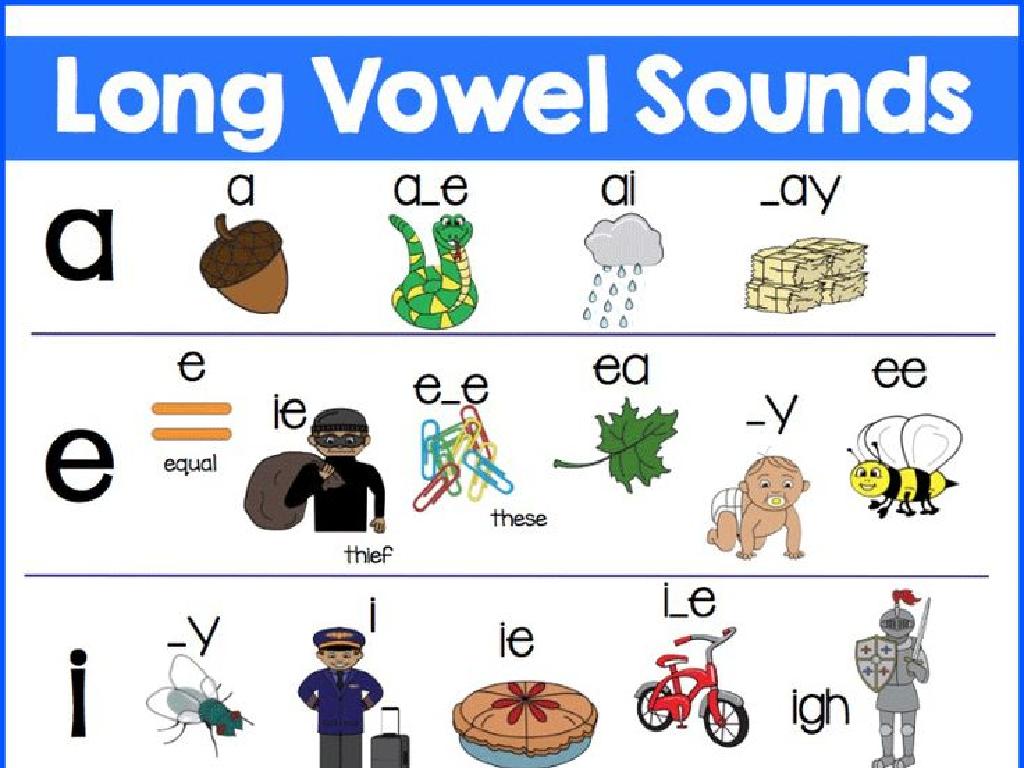Subtraction Word Problems With Pictures - Numbers Up To 5
Subject: Math
Grade: Kindergarten
Topic: Subtraction Word Problems Up To 5
Summary: Introduce Kindergarten students to subtraction within 5 using fun visuals and simple word problems. This engaging lesson uses pictures, everyday items, and hands-on activities to demonstrate how taking away works. Students will solve subtraction problems by counting toys, ducks, and blocks, reinforcing math vocabulary like "take away" and "less." With interactive games and practice stories, children strengthen early math skills while building confidence and understanding subtraction in a meaningful way.
Please LOG IN to download the presentation. Access is available to registered users only.
View More Content
Welcome to Subtraction!
– Greetings, little mathematicians!
– Subtraction means taking away
– If you have 5 apples and eat 2, subtraction helps you find how many are left.
– It shows us what’s left over
– For example, 5 carrots – 2 carrots = 3 carrots left.
– Let’s practice with pictures!
– We will use images to understand subtraction better.
|
This slide is designed to introduce Kindergarten students to the concept of subtraction in a fun and engaging way. Start by greeting the students warmly to capture their attention. Explain that subtraction is like taking things away and helps us figure out how many items we have left. Use simple, relatable examples like food items or toys to illustrate the point. Encourage the children to visualize the process by using pictures, which will help them understand the concept more concretely. During the lesson, use props or draw on the board to create interactive examples. The goal is to make the students comfortable with the idea of ‘taking away’ in a visual and tangible manner.
Understanding Subtraction
– Subtraction means taking away
– Start with a number, take away some
– Get a smaller number after subtraction
– Example with apples
– If you have 5 apples and eat 2, you have 3 left.
|
This slide introduces the concept of subtraction to Kindergarten students using simple language and relatable examples. Subtraction is explained as the process of taking some amount away from a larger group, which results in a smaller number. Use everyday examples, such as having a certain number of apples and eating some, to illustrate this concept. Encourage students to visualize the action of subtraction by using their fingers or objects like counters. This will help them understand that subtraction is about finding out ‘how many are left’ or ‘how many more’ when some are taken away. The example with apples is a practical way to show subtraction, and you can use similar examples with other familiar items to reinforce the concept.
Understanding Subtraction Words
– ‘Less’ means subtraction
– ‘Take away’ signals subtraction
– ‘Minus’ is another subtraction word
– Listen for these words to subtract
– When you hear these, get ready to count down
|
This slide introduces kindergarteners to the concept of subtraction by familiarizing them with common words that indicate a subtraction operation is needed. The words ‘less’, ‘take away’, and ‘minus’ are highlighted as key terms to listen for when solving subtraction word problems. The slide is designed to help students associate these terms with the action of taking away from a group or number. In the notes, provide examples of simple subtraction problems using these terms, such as ‘If you have 5 apples and take away 2, how many do you have left?’ Encourage students to use their fingers or objects to visually represent the subtraction as they solve the problems.
Let’s Try Together: Subtracting Blocks
– Start with 5 blocks
– Take away 3 blocks
– How many blocks are left?
– Use the picture to see 5-3
– Let’s count the remaining blocks
– Counting helps us find the answer
|
This slide is an interactive class activity designed to help Kindergarten students understand subtraction through a hands-on approach. Present a picture or physical blocks showing 5 blocks initially. Then, visually remove 3 blocks and ask the students to count the remaining blocks aloud together. This exercise reinforces the concept of subtraction by physically taking away and helps in developing counting skills. For students at different levels, you can vary the number of blocks or use different items. Some may use stickers, while others might draw the scenario, and a few could use toys to represent the subtraction. The key is to make the activity engaging and accessible for all students.
Subtraction Story: Ducks in a Pond
– Start with 5 ducks in a pond
– 2 ducks swim away
– How many ducks left?
– Picture 5 ducks, then 2 leave, count what’s left
– Use subtraction to solve
– 5 – 2 equals how many?
|
This slide introduces a simple subtraction word problem involving ducks in a pond to help Kindergarten students visualize the concept of subtraction. Begin by showing a picture of 5 ducks to engage the students. Then, explain that 2 ducks swim away, and ask the students to visualize this change. Encourage the children to use their fingers to represent the ducks, putting down 2 fingers to represent the ducks swimming away. This interactive approach helps them understand that subtraction is taking away. Finally, guide them to subtract 2 from 5 to find out how many ducks are left. Reinforce the concept by asking them to count the remaining ducks in the picture or on their fingers.
Practice Time: Subtraction Stories
– Try subtraction problems
– Look for ‘take away’ clues
– Words like ‘less’ or ‘fewer’ can signal subtraction
– Use pictures to help solve
– Draw or use objects to visualize the problem
– Share your answers with the class
|
This slide is designed to engage Kindergarten students in practicing subtraction word problems with numbers up to 5. Encourage the students to identify keywords in the problems that indicate subtraction, such as ‘take away,’ ‘less,’ or ‘fewer.’ Provide them with pictures or physical objects to visualize the subtraction process, which can help them understand the concept better. After they solve the problems, create a supportive environment where they can share and discuss their answers with the class. This activity not only reinforces their subtraction skills but also enhances their ability to communicate mathematical ideas.
Class Activity: Subtraction with Toys
– Start with 5 toys each
– Take away some toys
– If I take 2 toys away, how many do you have now?
– Count how many are left
– Understand subtraction
– Subtraction means finding out how many are left after taking some away.
|
This activity is designed to introduce the concept of subtraction to Kindergarten students using tangible objects like toys. Each student starts with 5 toys. The teacher will then instruct the students to give away a certain number of toys, and the students will count how many they have left. This hands-on approach helps students visualize the subtraction process. For the activity, consider having different scenarios for each student, such as taking away 1 toy from some and 2 toys from others, to show different subtraction results. Encourage students to use their fingers to count and ensure they understand that subtraction is the process of finding out the remaining quantity after some are taken away. The goal is to make the concept of subtraction relatable and understandable through physical interaction with objects.
Fantastic Subtraction!
– Subtraction means taking away
– Practice makes perfect
– The more you practice, the better you’ll get!
– Use toys to learn subtraction
– Try taking away blocks or action figures
– Keep practicing at home!
|
Congratulations to the students for learning the basics of subtraction! Reinforce the concept that subtraction is simply the process of taking away one number from another. Encourage them to practice with tangible items like toys, which can make learning more interactive and fun. Remind them that subtraction isn’t just for the classroom; it can be practiced anywhere, even at home. Keep the spirit of learning alive by suggesting they continue to practice with their parents or guardians. Celebrate their progress and remind them that every bit of practice will help them become subtraction superstars!

